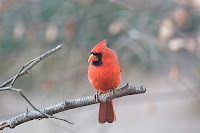This is not yo mama's lens!
Most any Canon DSLR owner would mortgage the house or their spouse to get what is known as "L-glass".

The Canon EF 70-200 L Lens, no matter which one you choose is absolutely awesome!
You would have to categorize this amazing lens as a mid-range zoom lens. Canon owners usually choose this lens as their first added lens after they get their initial walk-around lens, that is if they can afford it. After all, we are talking adding major $$$ to an already major investment.
Many consider the 70-200 to be the flagship lens for Canon DSLR cameras.
If you are new to Canon you may not know that there are several lenses with the 70-200mm focal range.
- Canon EF 70-200mm f/4.0 L USM Lens
- Canon EF 70-200mm f/4.0 L IS USM Lens
-> 20 elements in 15 groups
-> 3.0 x 6.8 in./76 x 172mm | 26.8 oz./760g (lens only) - Canon EF 70-200mm f/2.8 L USM Lens
- Canon EF 70-200mm f/2.8 L IS USM Lens
-> 23 elements in 18 groups
-> 3.4" x 7.8", 3.24 lbs. | 86.2mm x 197mm, 1470g

Notice that in Canon 70-200 f2.8 is only about 1" taller, but it is nearly
twice the weight.
What is the simple meaning of all this "stuff"?
EF - Electronic Focus. The lens will focus on the subject automatcally.
70-200mm - This is the focal range. 70mm is the wide angle focal length while 200mm is the longest focal length. Zooming in to 200mm will bring objects much closer in appearance.
f/4.0 and f/2.8 - this is the largest aperture. The lower the number, the more light will be able to enter the camera. So, f/2.8 will allow more light in than f/4.0. Larger aperture means faster shutter speeds and heavier equipment.
L - This is Canon's designation for their very best lenses. It originally meant "luxury", but now it means really good quality... and higher prices.
USM - Ultra sonic motor. A lens motor that is very quick to focus on the image.
There have been many discussions on the forums as to which of the four lenses with the 70-200mm focal range is Canon's best. Having read many of those discussions, some of which offer some very valuable insight, the conclusion is that there is no generally best choice. It depends on what you want from your new lens.
Check out these "IF's" so you can make the right choice.
IF you are looking for great quality and less expensive, choose the Canon 70-200mm f/4.0.
IF being able to hand hold your camera while shooting at relatively low shutter speeds is important (and price is still an object), then the Canon 70-200 f/4.0 IS is a good choice.
IF faster shutter speeds is a major concern, then, possibly the Canon 70-200mm f/2.8 is right. But be aware that weight and higher price will be a factor.
Finally,
IF faster shutter speeds is a major concern, then, possibly the Canon 70-200mm f/2.8 IS is right. But, again, be aware that weight and higher price will be a factor. In fact, the Canon 70-200mm f/2.8 IS is the most expensive of the listings.
 Here is a personal observation.
Here is a personal observation. I have had the Canon 70-200mm L f/4.0 for several years. I have never been really envious of those photographers who have the f/2.8 model because my f/4.0 takes amazing photos. Most of my bird and other nature photos were taken with the f/4.0. You can see the photo of Mr. Cardinal on the left (
click here to view a larger photo) I have used it at high school basketball and football (night) games with great success. I am a fan.. totally. That being said, if someone were to offer me a Canon 70-200mm L f/2.8 IS, I would not turn it down.
If price is an object, you can not go wrong with buying the least expensive of the Canon 70-200mm lenses.
Find more camera stuff at www.digital-photographic-resources.com



